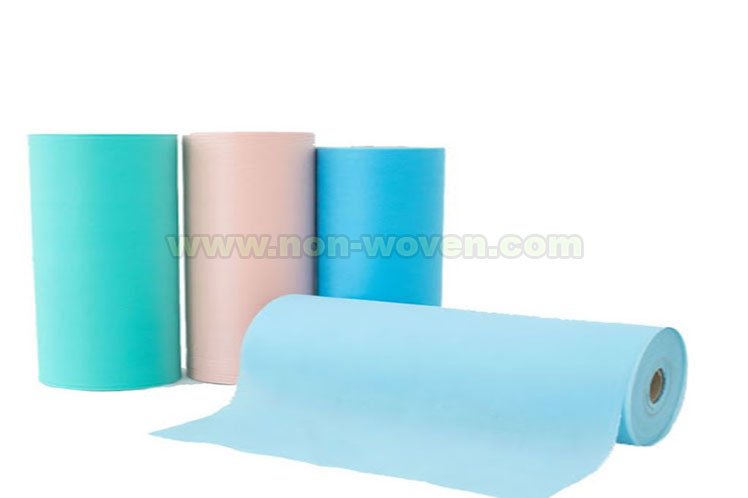Introduction
The textile industry is constantly evolving and diversifying. New materials and technologies are being developed all the time, which gives designers and manufacturers a lot of options to choose from.
One type of material that has seen a lot of growth in recent years is a non-woven fabric. This non woven fabric raw material is made from a variety of natural and synthetic fibers, which are bonded together to create a cloth-like fabric.
Non-woven fabric is used in a wide range of applications, from medical to industrial. It is strong, durable, and has a range of unique properties that make it ideal for specific uses.
In this article, we will take a look at 10 types of non woven fabric raw materials that you may not be familiar with.learn more(wikipedia)
1. Polypropylene:
Polypropylene is a type of thermoplastic polymer. This means that it can be melted and reformed several times without losing its properties. Polypropylene is a lightweight material that is strong and flexible. It is also resistant to chemicals and moisture. Polypropylene is used in a variety of applications, including – filters – medical supplies – car interiors – carpet
2. Nylon or Polyamide:
Nylon is a type of synthetic polymer. It is made from long chains of repeating units, which can be drawn out into fibers. Nylon is a strong and durable material that is resistant to abrasion and wear. Nylon is used in a variety of applications, including: – tires – carpets – ropes – webbing
3. Cellulose:
Cellulose is a type of natural polymer. It is the main component of plant cell walls and is also found in wood. Cellulose is a lightweight material that is strong and flexible. It is also biodegradable and compostable. Cellulose is used in a variety of applications, including – paper – clothing – insulation – food packaging
4.Acrylic
Acrylic is a type of synthetic polymer. It is made from long chains of repeating units, which can be drawn out into fibers. Acrylic is a lightweight material that is strong and durable. It is also resistant to chemicals and moisture. Acrylic is used in a variety of applications, including: – paint – fabric – plastic – glue
5.Polyester:
Polyester is a type of synthetic polymer. It is made from long chains of repeating units, which can be drawn out into fibers. Polyester is a strong and durable material that is resistant to abrasion and wear. It is also resistant to chemicals and moisture. Polyester is used in a variety of applications, including – clothing – upholstery – carpet – food packaging
6. Spandex or Elastane:
Spandex is a type of synthetic polymer. It is made from long chains of repeating units, which can be drawn out into fibers. Spandex is a lightweight material that is strong and flexible. It is also resistant to chemicals and moisture. Spandex is used in a variety of applications, including – clothing – upholstery – swimwear – undergarments
7. Olefin:
Olefin is a type of synthetic polymer. It is made from long chains of repeating units, which can be drawn out into fibers. Olefin is a lightweight material that is strong and durable. It is also resistant to chemicals and moisture. Olefin is used in a variety of applications, including: – ropes – webbing – carpet – upholstery
8. Modacrylic:
Modacrylic is a type of synthetic polymer. It is made from long chains of repeating units, which can be drawn out into fibers. Modacrylic is a lightweight material that is strong and durable. It is also resistant to chemicals and moisture. Modacrylic is used in a variety of applications, including: – clothing – upholstery – carpet – insulation
9. Vinyon:
Vinyon is a type of synthetic polymer. It is made from long chains of repeating units, which can be drawn out into fibers. Vinyon is a lightweight material that is strong and flexible. It is also resistant to chemicals and moisture. Vinyon is used in a variety of applications, including – clothing – undergarments – swimwear – medical supplies
10. Other Raw Materials:
There are a variety of other non woven fabric raw materials that can be used to make non-woven fabric.
These include:
- wool
- cotton
- linen
- silk
- bamboo
- cashmere
- jute
Conclusion
There are a variety of types of non woven fabric raw material available on the market today. Each type has its own unique set of properties and benefits. By understanding the different types of raw materials available, manufacturers can choose the best type for their specific application. We hope this article has helped you to better understand the different types of non woven fabric raw material available and how to choose the best type for your needs.
Mandy Hong
Mob./Cell:0086-13599755808(WhatsApp/ Viber/Wechat/ Line)

